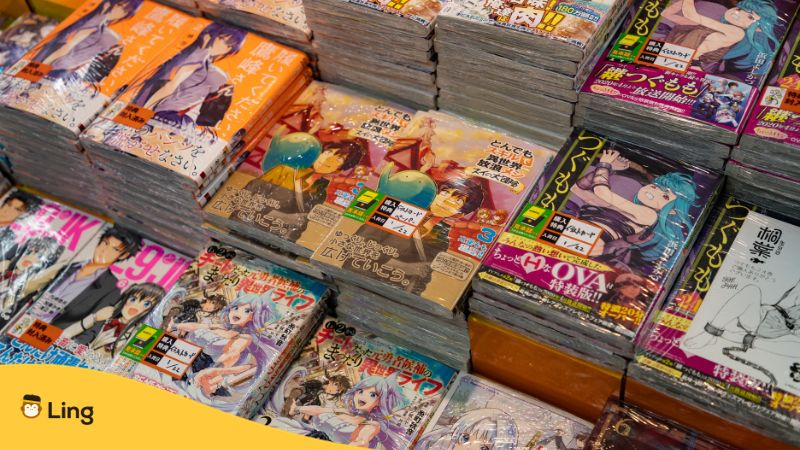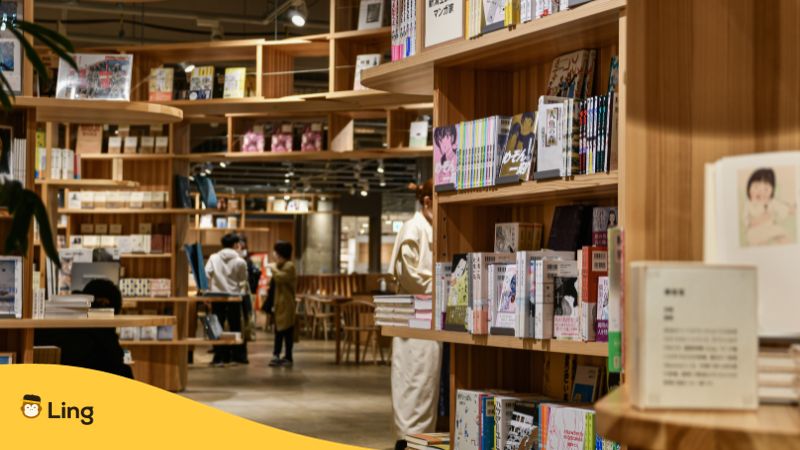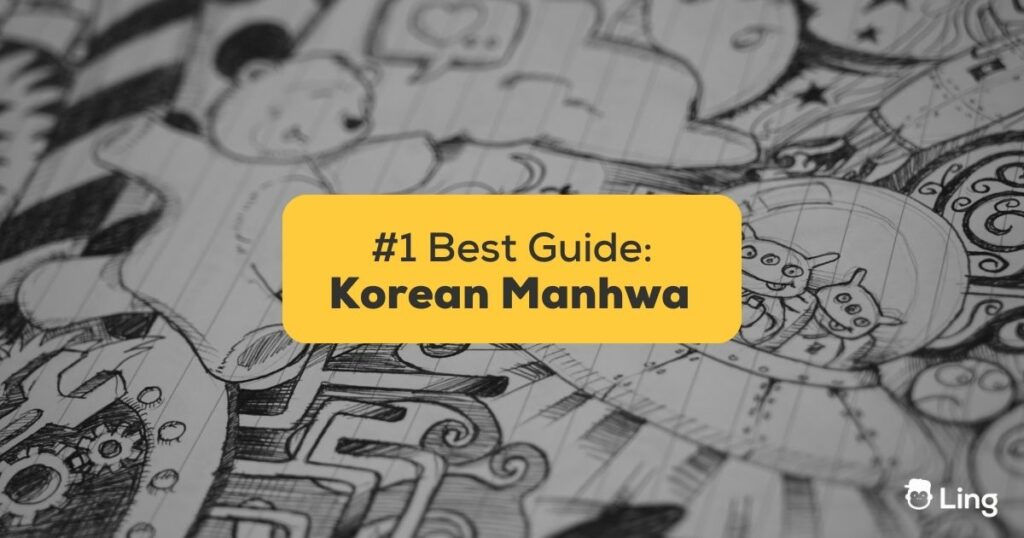Ever been so engrossed in a tale that the world fades into a soft haze? That last slice of cake forgotten? That next bus missed? While you might have experienced this with books or films, there’s another contender on the block, ready to captivate: enter the world of Korean Manhwa.
Think of your cherished comics. Got it? Now, splash on a shade of Korean charm, an aesthetic zing, and storytelling that keeps you on your toes. What do you get? Manhwa – where some see a world to escape into, and others find a burning passion. Whether you’re a Manhwa maven or a newbie hunting for a new entertainment flavor, grab your favorite reading snack because we’re diving headfirst into the swirling waters of Korean Manhwa.
What Is Manhwa (만화)?
Manhwa (만화) is, in essence, Korea’s answer to comics. But let’s clear the air – it’s not just Korea’s version of Japanese Manga. Manhwa is a storytelling canvas, painting vivid tales that are drenched in Korean culture, history, and societal undertones. It’s like calling pizza a mere flatbread with toppings – it’s so much more! Historically, Manhwa is a close cousin of the Chinese comics, manhua (漫畫).
Flashback to the early 20th century, Manhwa took baby steps, influenced by Korea’s artistic traditions and Western-style political cartoons. From its humble beginnings of political jabs and chuckle-worthy sketches, Manhwa today spans a galaxy of genres: be it romance that makes your heart flutter, action that keeps you at the edge, or fantasies that whisk you to faraway realms.
Characteristics Of Manhwa
While there are many parallels between Manhwa and other global comic forms, several unique characteristics define Manhwa:
- Reading Direction: Unlike Manga, which is read from right to left, Manhwa is read in the Western style, from left to right.
- Artistic Style: The art in Manhwa often leans towards more realistic proportions and features, in contrast to the often exaggerated styles seen in some other comics. This isn’t a strict rule, but a general observation.
- Themes: While Manhwa explores universal themes like love, friendship, and conflict, it often interweaves elements exclusive to Korean culture, tradition, and societal norms.
Cultural Significance Of Manhwa
Manhwa holds a special place in Korean entertainment and culture. It’s a medium that offers commentary on societal issues, historical events, and the daily lives of people. Over time, it has become a significant cultural export, with many popular Manhwa being translated into multiple languages and reaching readers worldwide.
Manhwa Genres
Think of Manhwa as an all-you-can-read buffet. There’s something for the romantics, the thrill-seekers, the daydreamers, and, well, just about everyone! From heartwarming tales to adrenaline-packed adventures, Manhwa genres span a vast landscape ensuring that nobody leaves unsatisfied. Ready for a quick tour of the Manhwa buffet table? Let’s unwrap some of the most sought-after genres, their essence, and a few must-reads for each.
Romance Manhwa (로맨스 – “Ro-maen-seu”)
As the name suggests, this genre revolves around love and romantic relationships. It often delves into the complexities of relationships, the joy of love, and the pain of heartbreak.
- Example: “Something About Us” by Lee Yunji.
Fantasy Manhwa (판타지 – “Pan-ta-ji”)
Fantasy Manhwa transports readers to magical worlds, where mythical creatures roam, and heroes embark on epic quests.
- Example: “Solo Leveling” by Chugong.
Drama Manhwa Manhwa (드라마 – “Deu-ra-ma”)
Drama Manhwa dives deep into intense, emotional, and often complicated situations, offering readers an immersive experience into the lives of its characters.
- Example: “Cheese in the Trap” by Soonkki.
Horror Manhwa (호러 – “Ho-reo”)
For those who enjoy a good scare, the horror genre in Manhwa delivers spine-chilling tales filled with suspense, mystery, and the supernatural.
- Example: “Sweet Home” by Carnby Kim and Youngchan Hwang.
Action Manhwa (액션 – “Aek-syeon”)
Packed with adrenaline, the action genre captivates readers with its dynamic sequences, combat scenarios, and intense confrontations.
- Example: “The Breaker” by Jeon Geuk-jin.
Historical Manhwa (사극 – “Sa-geuk”)
This genre offers a window into Korea’s past, often interweaving real historical events with fictional narratives.
- Example: “Bridal Mask” by Huh Young-man.
Comedy Manhwa (코미디 – “Ko-mi-di”)
For those looking for a good laugh, comedy Manhwa offers humorous plots, witty dialogues, and comedic situations.
- Example: “Sound of Your Heart” by Jo Seok.
Slice Of Life Manhwa (일상 – “Il-sang”)
Slice of Life Manhwa revolves around the daily lives of characters, shedding light on their ordinary experiences that many readers can relate to.
- Example: “My ID is Gangnam Beauty” by Maeng Maeng.
Mystery Manhwa (미스터리 – “Mi-seu-teo-ri”)
Engaging and suspenseful, this genre offers intriguing puzzles, crimes, and enigmas for its characters (and readers) to solve.
- Example: “Death Field” by Amazing Works.

Manhwa VS. Manga
When diving into the world of illustrated stories from Asia, two titans emerge: Manhwa and Manga. Both are beloved forms of entertainment with avid fans across the globe. But what differentiates these two? Let’s embark on a journey of understanding, comparing, and contrasting Manhwa (Korea) with Manga (Japan).
Manhwa, straight out of South Korea, is like a vibrant tapestry of Korean life. Through its panels, you’ll meander through Korean cities, brush against societal expectations, and perhaps even get a glimpse of historic landmarks. Manga, the Japanese counterpart, pulls you into a dance of Japanese essence – be it bustling festivals, hierarchical nuances, or the melodic lilt of the Japanese language.
Grab a Manhwa and you’ll be flipping its pages from left to right, just like your favorite novel. Now, Manga likes to mix things up. Traditional manga beckons you to read from right to left, making the experience intriguingly mirrored for Western readers.
In the corner of Manhwa, the artwork often leans towards realism. It’s not unusual to find characters rendered with precision and lifelike proportions. Manga, however, is an artful chameleon. One minute, you might be looking at exaggerated, almost caricature-like figures, and the next, you’re drawn into realistic, detailed portrayals.
Today’s Manhwa frequently wears a modern attire called webtoons, tailor-made for the digital scroll on your smartphone or tablet. Manga, while definitely having its digital moments, often sticks to its roots with stories unfolding in weekly or monthly magazines. When a particular tale gets readers’ hearts racing, it’s elegantly compiled into volumes.

Manhwa VS. Webtoons
With Korean comics taking the global stage by storm, two terms have emerged and swirled in conversations: “Manhwa” and “Webtoon.” But, amidst the buzzing chatter, some eyebrows raise in confusion. Are these just two words for the same thing, or is there a plot twist? Let’s unravel this illustrated mystery.
- Manhwa: Manhwa refers to traditional Korean comics. Historically, they have been printed in magazines and books. The term encompasses a wide range of Korean comics, irrespective of their publication medium.
- Webtoon: Webtoon is a portmanteau of the words “web” and “cartoon.” As the name suggests, Webtoons are digital comics specifically designed for online consumption. They are typically serialized, with new episodes or chapters released periodically.
Now, for the format twist: While Manhwa echoes Western comics, guiding your eyes from left to right with familiar panel arrangements on paper pages, Webtoons shake things up. Designed for a modern scroll, Webtoons flow vertically. They’re a dream for the digital nomad, crafted for seamless reading on smartphones or tablets.
And what about distribution? Classic Manhwa often graces physical shelves in magazines or volumes. Although many have made the leap to digital, they might cling to their page-by-page essence. Webtoons, on the other hand, are digital natives. Platforms like LINE Webtoon, Tapas, or Lezhin Comics serve up these stories, ensuring they’re just a click away for fans across the globe.
How Can Manhwa Help You Learn Korean
Learning a new language is a journey, filled with challenges, excitement, and aha moments. Korean, with its intricate grammar and unique script, might seem daunting to some. However, integrating enjoyable mediums, like Manhwa, into your learning process can not only make it fun but also highly effective. Let’s explore how Manhwa can be a game-changer in your quest to master Korean.
Manhwa Provides Real-Life Dialogues
Forget the stiff, out-of-context sentences you might find in some textbooks. Manhwa throws you into the heart of real, everyday Korean chat. Here, slang, idioms, and those little colloquial gems that traditional courses might miss come alive.
Images Support Comprehension
Ever stumbled upon an unfamiliar word? With Manhwa, the lively illustrations have got your back. If a character’s wide-eyed expression accompanies a word you haven’t met, you might just have found the Korean word for ‘shocked’ or ‘astonished’.
Understanding Cultural Nuances
Language isn’t just words – it’s a window into a world. Manhwa is your front-row seat to the vibrant tapestry of Korean life, from bustling festivals to quiet traditions. This isn’t just fun; it’s a booster for your linguistic journey, making phrases and words stick because they mean something.
Improved Reading Skills
With every page of Manhwa you flip, you’re dancing with the Korean script, Hangul. And just like any dance, the more you practice, the more fluent your moves (or in this case, reading) become. Encountering fresh words wrapped up in intriguing storylines? That’s gold. You’re more likely to remember them because of the juicy context they’re wrapped in. Plus, seeing them time and again across different tales solidifies their meaning.
Level Up Your Korean With Ling
Ever thought about spicing up your language-learning journey? Enter Manhwa – where riveting storylines meet vivid illustrations. With each page turn, you’re not just diving into a gripping tale; you’re also soaking up the Korean language in its most vibrant form. By bonding with characters and getting lost in their adventures, you’re doing more than just leisure reading. You’re gearing up for a linguistic deep dive!
Curious about mastering Korean? Dive in with the Ling app. Available on both the App Store and Play Store. Unravel the layers of this mesmerizing Asian language. Ready to get started? Give it a whirl today!



































































